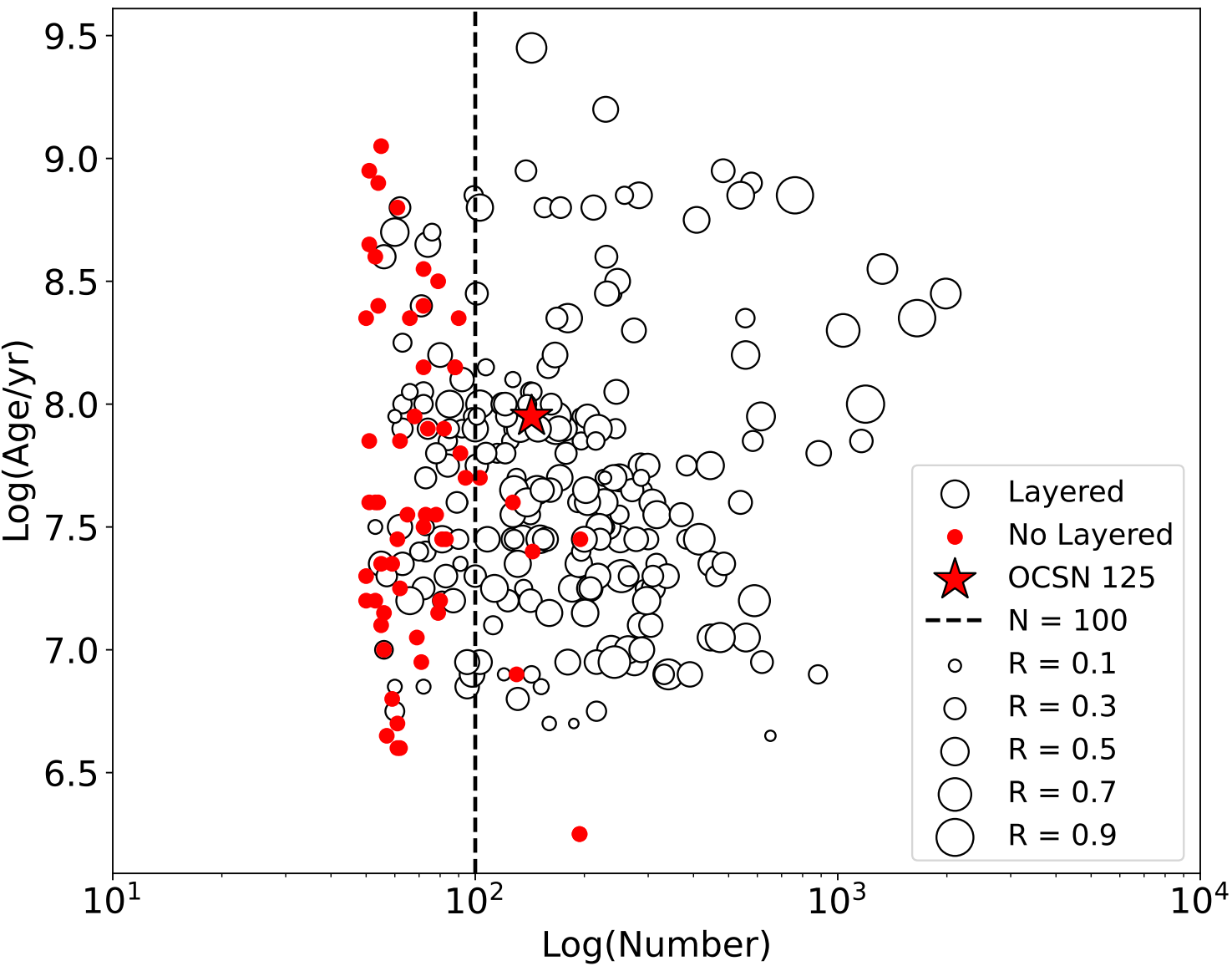2025-06-30 中国科学院(CAS)
 The relationship between the number of member stars, cluster age, and threedimensional layered structure in 279 open cluster samples. Red circles represent clusters without a three-dimensional layered structure, while hollow circles indicate clusters with a 3D layered structure. The radius of each circle corresponds to the scale of the three-dimensional layered structure region. The red star marks the selected cluster OCSN 125. (Image by XAO)
The relationship between the number of member stars, cluster age, and threedimensional layered structure in 279 open cluster samples. Red circles represent clusters without a three-dimensional layered structure, while hollow circles indicate clusters with a 3D layered structure. The radius of each circle corresponds to the scale of the three-dimensional layered structure region. The red star marks the selected cluster OCSN 125. (Image by XAO)
<関連情報>
- https://english.cas.cn/newsroom/research_news/phys/202507/t20250702_1046589.shtml
- https://www.aanda.org/articles/aa/full_html/2025/05/aa54066-25/aa54066-25.html
N体シミュレーションによる近傍散開星団の3次元層構造の解明 Insights into the 3D layered structure of nearby open clusters through N-body simulations
Kaixiang Lang (郎凯祥), Yu Zhang (张余), Hubiao Niu (牛虎彪), Jayanand Maurya, Jinzhong Liu (刘进忠) and Guimei Liu (刘桂梅),
Astronomy & Astrophysics Published:15 May 2025
DOI:https://doi.org/10.1051/0004-6361/202554066
Abstract
Context. Open clusters (OCs) are important for understanding star formation, dynamics, and evolution. Previous studies have indicated a relationship between cluster structure and member star properties, but the formation mechanism of the layered structure of OCs remains unclear.
Aims. We study the three-dimensional spatial distribution of 279 nearby OCs to understand the formation mechanism of the layered structure.
Methods. We analyzed the spatial distribution of member stars within each OC and correlated the presence of a layered structure with the number of member stars. Additionally, we performd N-body simulations to model the evolution of OCSN 125. We assessd the correlation between the binary fraction, the most massive star, and the radius of the layered structure in each simulated OC.
Results. Our analysis reveals that OCs with fewer member stars tend to lack a layered structure. The results from N-body simulations indicate that the presence of a layered structure is strongly influenced by dynamical factors, particularly the most massive star and the binary fraction. Massive stars drive mass loss through supernova explosions and stellar winds, which weaken the spatial layering. Furthermore, clusters with higher binary fractions exhibit a weaker layered structure, likely due to energy equipartition, dynamical friction, and perturbations caused by binary systems. These factors contribute to delaying core collapse and slowing the emergence of a layered structure.
Conclusions. Our findings suggest that dynamical interactions, including the effects of the most massive stars and binary fraction, play a critical role in the formation and disruption of the layered structure in OCs.



